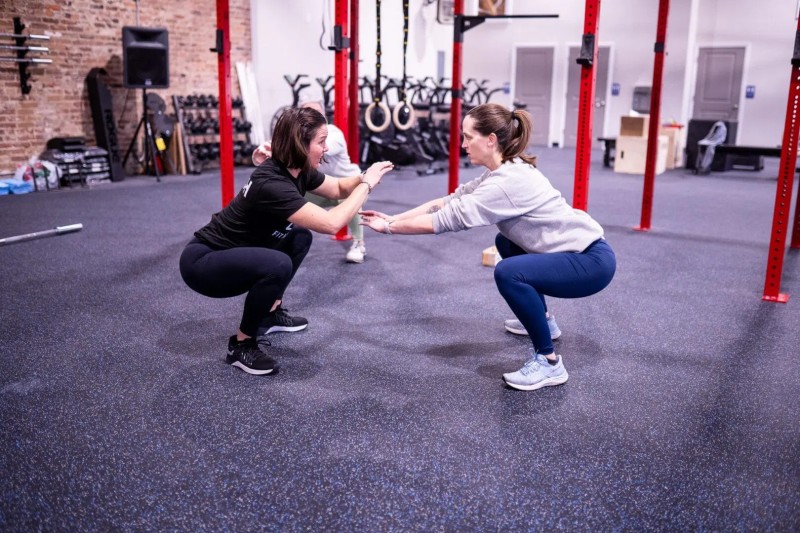Current location:Home > Fitness & Movement > Injury Recovery > Text
Time:2025-06-18 Source:Mind Body FuelAuthor:Click:36
Whether you’re an athlete or a fitness enthusiast, a high ankle sprain can be a significant setback. High ankle sprain rehab is an essential process to understand and implement correctly to ensure a successful recovery. This article will guide you through the process, offering professional insights and practical steps for your recovery journey.
A high ankle sprain, also known as a syndesmotic sprain, affects the ligaments that connect the two lower leg bones. These injuries often occur during high-impact activities, such as football or soccer. A 2022 study from the Journal of Sports Medicine found that high ankle sprains make up approximately 15% of all ankle sprains.
High ankle sprain rehab is crucial to restoring your ankle’s strength and mobility. The rehab process typically involves rest, ice, compression, and elevation (RICE) immediately after the injury, followed by physiotherapy exercises and, in some cases, surgery.
One of the initial steps in high ankle sprain rehab is to rest and protect your ankle. This means avoiding bearing weight on the injured leg and using crutches or a boot if necessary. Icing your ankle can help reduce swelling and pain. Aim for 15-20 minutes every two to three hours for the first 48 to 72 hours after the injury.
Compression and elevation are also key components of the initial rehab process. Wrapping your ankle with a bandage can help minimize swelling, while keeping your ankle elevated above the level of your heart can reduce blood flow to the area and help decrease inflammation.
Once the swelling has decreased, physiotherapy exercises become a critical part of your high ankle sprain rehab. These exercises aim to restore your ankle’s range of motion, strength, and balance. A 2023 study in the Journal of Physical Therapy Science emphasized the importance of these exercises, suggesting they can significantly improve recovery outcomes.
Examples of these exercises include ankle circles, calf stretches, and balance exercises. As with any exercise regimen, it’s important to start slowly and gradually increase intensity as your strength and mobility improve. Always consult with a healthcare professional before starting a new exercise regimen to ensure it’s safe and effective for your specific situation.
In severe cases, surgery may be required as part of high ankle sprain rehab. This usually involves repairing the damaged ligaments to restore stability to the ankle. Following surgery, a period of immobilization is typically required before resuming physiotherapy exercises.
Recovering from a high ankle sprain can be a challenging process, but with the right rehab plan and a commitment to recovery, you can regain your strength, mobility, and return to your regular activities. Remember, every recovery journey is unique, so it’s important to listen to your body and seek professional advice when needed.

Discover Your Core Values with a Purposeful Worksheet

Unwind and Get Fit with Beach Yoga Classes in San Diego

Unlock Your Financial Wellness: The Power of Money Journaling

Unlock Your Health Potential with a Water Intake Calculator

Unlocking Gut Health: The Powerful Role of Yogurt in Your Diet

Unveiling the Link Between Screen Time and Depression

Kundalini Yoga Locations: Your Guide to Embarking on a Wellness Journey

Unraveling the Neuroprotective Effects of CBD: A Look Into Recent Research

Boosting Corporate Wellness Participation through Effective Incentives

Unveiling the Best Plant-Based Omega-3 Sources for Optimal Health
 Discover Your Core Values with a Purposeful Worksheet
Discover Your Core Values with a Purposeful Worksheet
 Unveiling the Link Between Screen Time and Depression
Unveiling the Link Between Screen Time and Depression
 Kundalini Yoga Locations: Your Guide to Embarking on a Wellness Journey
Kundalini Yoga Locations: Your Guide to Embarking on a Wellness Journey
 Discover the Benefits of Anti-Snoring Pillows: The Wedge Shape Advantage
Discover the Benefits of Anti-Snoring Pillows: The Wedge Shape Advantage






Copyright @ 2025 Mind & Body Fuel Email:xya0876@gmail.com No:26148
Statement: The articles on this website are all from the Internet and do not represent any views. Before making any health decisions, you must consult your doctor.